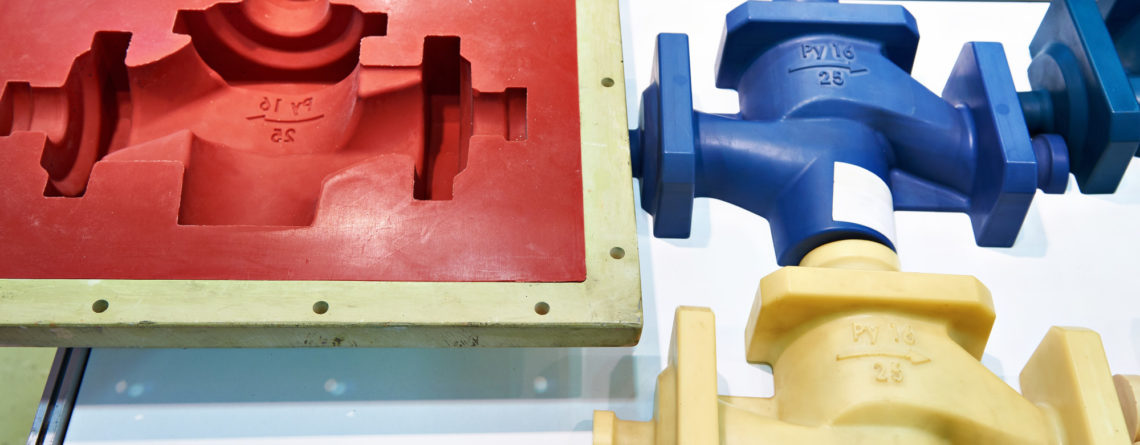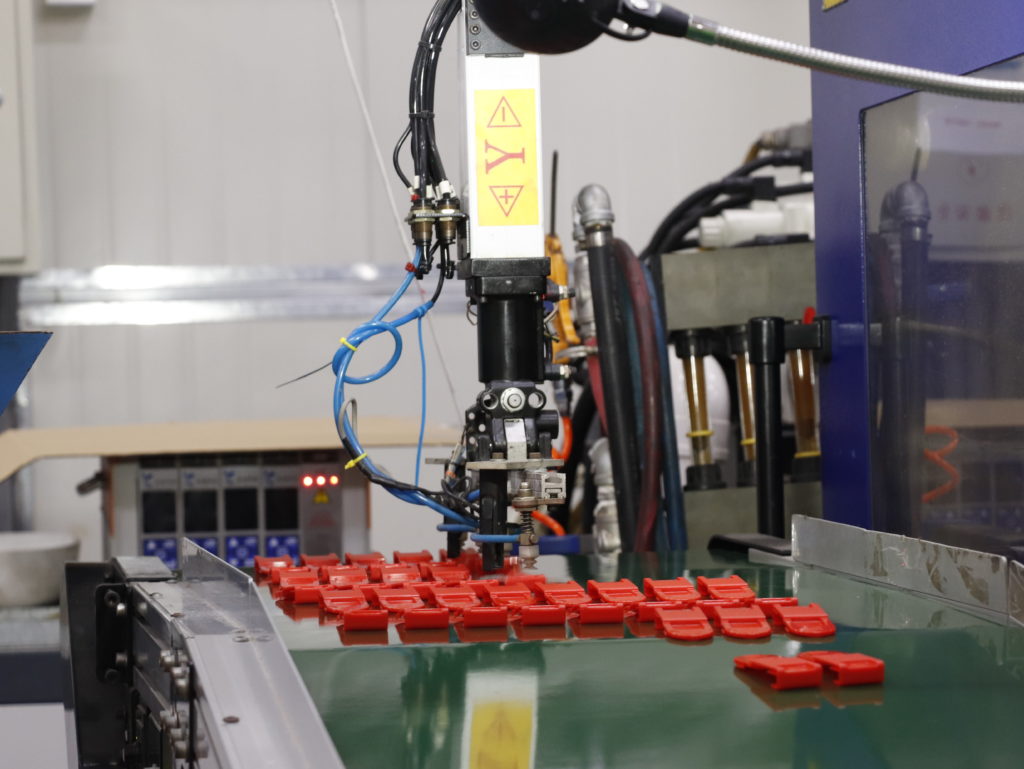What is Plastic Injection Molding? Our Comprehensive Overview
Plastic injection molding is responsible for making one of the most popular kids’ toys, Lego!
With the plastic injection molding market expecting to reach a value of $345 billion by 2024, it makes you wonder why it’s such a popular manufacturing process.
Keep reading to learn everything you need to know about plastic injection molding.
What is Plastic Injection Molding
Plastic injection molding is a manufacturing process for producing a variety of parts by injecting molten plastic material into a mold, and letting it cool and solidify into the desired end product. Plastic injection molding is one of the many services we offer here at Protech, and we adapted it to be able to produce prototypes and run small batches of plastic parts, from as few as 100 parts to over a thousand.
This manufacturing process was inspired by traditional molding tactics. We start off by injecting your plastic parts with an aluminum prototype mold, otherwise known as rapid tooling. The parts that are created with this process are equivalent to series molds.
Plastic injection molding is desirable because it’s a way to get sample parts created quickly, and makes it possible to get functional parts made from the correct material. This also lets you start marketing the product and lets you try it out before doing a large production run.
Plastic Injection Molding Process
For injection molding with plastic, you first have to have two halves of the mold you’re going to inject the plastic into. Both halves of the mold are clamped to the plastic injection molding machine. Then, the hydraulic-powered clamping unit pushes the two halves together so they fit securely. These halves must be secured tightly together so no material is able to escape.
Next, the plastic material, usually in pellets, is fed into the injection molding machine allowing them to melt into molten plastic. Once the plastic is all melted, it’s injected very quickly into the mold until it’s full, this is usually referred to as “the shot”.
As soon as the molten plastic leaves the injection molding machine it starts to cool on contact with the mold. This is why the plastic needs to be injected rapidly, so it’s able to cool at the same consistency, leaving you with a smooth end product. Once it’s cooled, the plastic mold is released by opening the two halves of the mold.
Potential Flaws
This process can sometimes leave excess material on the part from where the mold is compacted together. This usually is expected to happen and can be easily cut off and cleaned in post-processing.
What’s great is that the excess material that does get trimmed off can usually be recycled and used again by melting the plastic, making plastic injection molding an eco-friendlier option.
History of Plastic Injection Molding
Plastic injection molding was originally focused on creating combs and buttons, but has evolved in the manufacturing space to now create products for many industries. has quite the history, here’s a brief timeline.
1861
Alexander Parkes created the first man-made commercial plastic.
1872
John Wesley Hyatt patented the first injection molding machine. As to be expected, this machine was simple compared to the types of machines we have today.
This original machine worked similarly to a large hypodermic needle and a plunger to inject plastic into a mold that runs through a heated cylinder. Back then this machine typically produced necklaces, buttons, and combs.
1919
Arthur Eichengrün created the first injection molding press, which is considered to be the first modern injection molding machine.
1926
Eckert and Ziegler obtained a patent for the first injection molding machine with commercial characteristics.
1930
While injection molding was gaining traction in America since 1919, in 1930 France saw its first injection molding machines.
1930 marks the start of plastic household items and toys on the consumer market.
1930 also saw the initial development of polyvinyl chloride (PVC) plastics. PVC is still widely used to this date.
1939
During WWII, there was a massive demand for cheap, and mass-produced materials. Thanks to plastic injection molding, it was possible to meet the demand for these products.
1940
By this time, the injection molding industry started developing rapidly due to the huge demand for inexpensive mass-produced consumer products.
1946
Thanks to American inventor James Watson Hendry, injection molding got a whole lot more precise. He is credited with building the first machine to use injection screws. This gives the operator more precise control over the injection speed and helps to improve the quality of the products produced.
The invention of this machine also made it possible to add colored and recycled plastic to the raw plastic pellets before it all melted together.
Nowadays, machines using injection screws inspired by Hendry’s original machine account for the majority of all injection molding machines used today.
1955
From 1955 to 1965 there were a number of highly useful new thermoplastics that became available. Thanks to the Phillips process and the Ziegler process, there was the creation of high-density polyethylene. Acetyl, ABS, and polycarbonates are also developed during this time.
1970
James Watson Hendry developed the first gas-assisted injection molding process. Thanks to this, production now could be more complex and allow for hollow parts that cooled quickly.
Benefits of Plastic Injection Molding
There are many benefits to plastic injection molding that make it one of the most popular forms of part manufacturing. Keep reading to learn our favorite benefits.
Detailed Features
In the plastic injection molding process, the molds are subjected to high pressure. As a result, the plastic is pressed harder against the mold compared to any other molding process. This higher pressure makes it possible to add minute details into the plastic part, and still have them seen clearly.
Think of lego, and how detailed those little parts get. This is due directly to the manufacturing process used to create them. If you tried to do this with another process, it would become extremely expensive, and wouldn’t turn out as well.
Highly Efficient
With injection molding, once the parts have been designed to meet all your specifications, the tooling is created, and after runs have been successful, the actual molding process is very quick.
After the initial setup of the part, the production happens quickly and inexpensively. You’re able to run the products through the manufacturing process with consistency and ease.
Stronger Parts
Plastic injection molding is unique in that it allows fillers to be used in the injection molds. The fillers reduce the density of the plastic during the molding process and can increase the overall strength of the product.
Glass fibers are one of the most common additives used in plastic injection molding because it significantly improves the strength of the product. Ceramic fillers can be used to increase the temperature the product can withstand.
Use Multiple Plastics
There are many different types of plastics, and with injection molding, you get the best of all plastic worlds. This is done using co-injection molding, letting you use different types of plastics simultaneously.
More Precision
Certain parts require very precise measurements in order to work exactly right. Injection molders can obtain designs that are accurate within +/- .001 inches.
Consistent Results
Plastic injection molding allows for consistent results among multiple runs. Your parts will be consistent from the first batch to the last batch with injection molding, making it a reliable manufacturing process.
Multiple Finishes
Injection molding lets you choose from a variety of finish types. You have the choice between a smooth shiny finish, matte finish, or a unique textured finish. Injection molding lets you choose the finish that’s going to look the best and function the best for your parts.
Multiple Color Options
Unlike most metal manufacturing processes, when you choose to use a plastic injection molding process you’re able to choose the color you want without having to do any post-processing. There’s a wide variety of colors you can choose from that’s going to give your product the look you want.
Most Important Considerations
When it comes to injection molding, there are quite a bit of important matters you need to consider.
Part Design
First, you need to consider the part design. You’ll need to think about what wall thickness you want if you want the part to be solid or hollow. Think about what you want your end product to be when going into the part design.
Material Type
When getting ready to start injection molding, you’re going to want to research the right material for your part. What plastic polymer is going to have the properties you need, and what color are you going to want? You’ll also need to consider whether you want any special additives added to your part.
The best thing to do is to contact a professional company and talk to them about your wants and needs.
Tooling Requirements
When you’re getting ready to start production, you’ll need to consider the type of tooling requirements are there. Tooling is the fixtures that the parts are created using, this tooling holds the mold while they are cooling down.
Some questions to consider when looking at tooling requirements are: how many parts do I need, how much am I willing to spend, do I plan on this being a short term or long term run?
Quality Assurance
When considering your product you want to make sure it’s going to be of high quality. This means working with a company that’s going to deliver the highest quality products on a consistent basis.
Timing Considerations
You’ll want to also consider how much time it’s going to take to manufacture the part. That’s not the only time consideration though, you also want to make sure the company you choose is going to be able to create the parts in a timely manner that fits with your schedule.
Of course, you need to remember that injection molding does take time, but if you need the parts in a week, and the company takes two months for a production run, they may not be the best fit for you.
Cost and Quote Comparison
Just because it’s the first company you found, doesn’t mean it’s going to be the best option for you. Don’t be afraid to reach out to multiple companies and get multiple quotes from them.
Ask them questions about the cost and be sure to really understand what goes into the quote, and what you’ll end up spending in the end.
Some factors that affect the price are the number of cavities the parts going to have. The mold base will also affect the price you end up paying. Another cost factor is how complex the part is. If the part is overly complex with a lot of detail it’s going to cost more than if it’s just a simple design.
Kind of Machinery
All of the previously mentioned factors are related, and the choices you make for each of them are going to determine what kind of machinery you’ll need to use for your parts.
Of course, these are just a few of the things to consider when getting ready to get some plastic injection molding done. The best thing you can do is find a company that specializes in plastic injection molding and have them help you create your part.
Start Injection Molding Today
If you’re looking to get a part plastic injection molded, get your free quote from us today. We’ve been in business for over 10 years, and have the experience you need to start your plastic injection molding project today.



